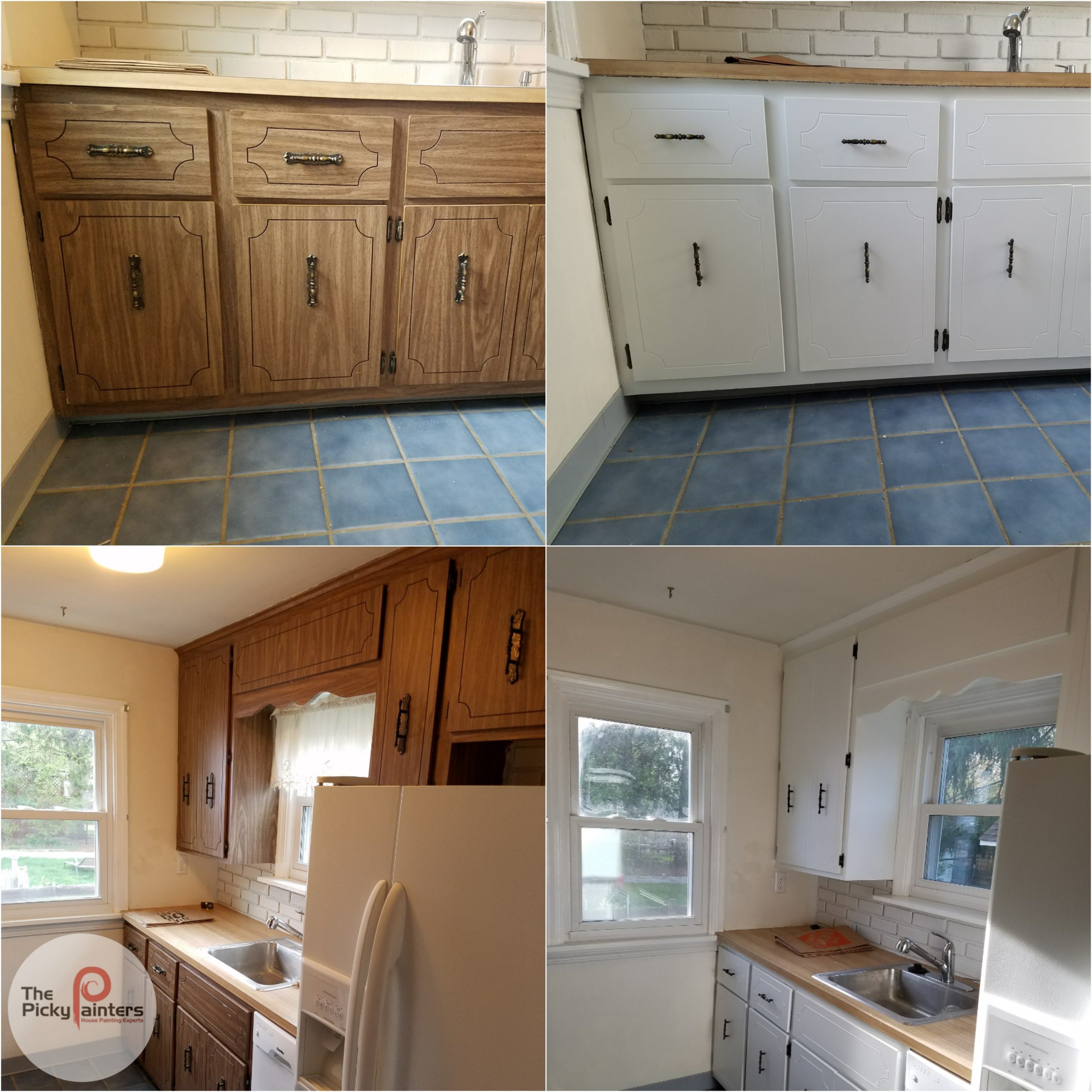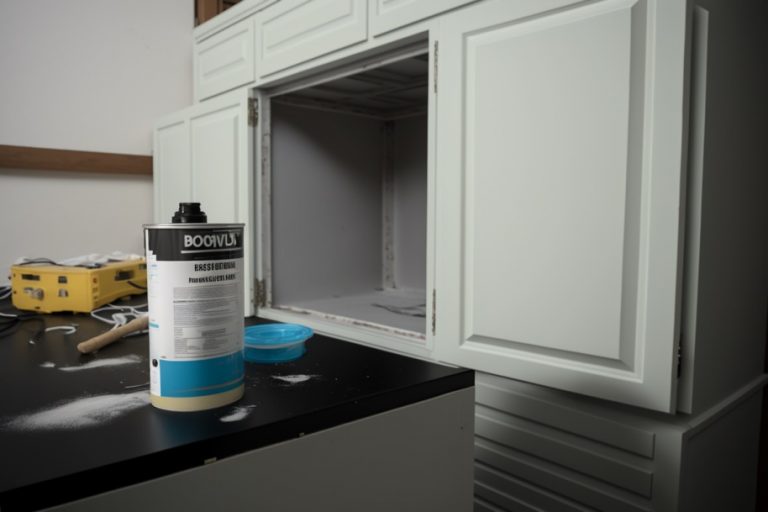Understanding Kitchen Cabinet Primers

A primer is an essential part of painting kitchen cabinets. It acts as a foundation, providing a smooth and even surface for the paint to adhere to. This helps ensure a long-lasting and professional-looking finish.
Types of Primers
Primers come in various types, each with its own characteristics and benefits.
- Adhesion Primers: These primers are designed to improve the adhesion of paint to surfaces that are difficult to paint, such as glossy surfaces or surfaces with a lot of texture.
- Shellac-Based Primers: Shellac-based primers are known for their ability to seal in stains and odors, making them ideal for cabinets that have been exposed to smoke or other contaminants.
- Epoxy Primers: Epoxy primers are very durable and resistant to moisture, making them a good choice for kitchen cabinets that are exposed to a lot of water or grease.
- Acrylic Primers: Acrylic primers are water-based and dry quickly, making them a popular choice for DIY projects. They offer good adhesion and are available in a variety of colors.
Benefits of Using Primer
Using a primer on kitchen cabinets offers several advantages:
- Improved Adhesion: Primer creates a smooth and even surface that allows the paint to adhere better, preventing peeling and chipping.
- Enhanced Durability: Primer acts as a protective barrier, shielding the cabinets from moisture, stains, and scratches.
- Smoother Finish: Primer fills in imperfections and creates a smooth surface for a professional-looking paint finish.
- Better Coverage: Primer helps the paint to cover the surface more evenly, especially when painting over dark or uneven surfaces.
Oil-Based vs. Water-Based Primers, Primer for kitchen cabinets
The choice between oil-based and water-based primers depends on your specific needs and preferences.
- Oil-Based Primers: Oil-based primers offer excellent adhesion, durability, and stain blocking properties. They are also known for their self-leveling properties, which help create a smooth finish. However, oil-based primers have a strong odor and require longer drying times compared to water-based primers.
- Water-Based Primers: Water-based primers are easier to clean up and have a lower odor than oil-based primers. They dry quickly and are generally less expensive. However, water-based primers may not offer the same level of durability and adhesion as oil-based primers.
Preparing Kitchen Cabinets for Priming: Primer For Kitchen Cabinets

Preparing kitchen cabinets for priming is crucial for achieving a smooth, durable, and aesthetically pleasing finish. Proper preparation ensures that the primer adheres well to the surface, preventing peeling, cracking, and other imperfections. This step involves cleaning, sanding, and repairing any existing damage to the cabinets.
Tools and Materials Needed for Preparing Kitchen Cabinets
Before starting the preparation process, gather the necessary tools and materials:
- Cleaning Supplies: A mild detergent, warm water, a soft cloth, and a sponge are essential for cleaning the cabinets.
- Sandpaper: Sandpaper with various grits (80, 120, 220) is required for smoothing out imperfections and creating a suitable surface for priming.
- Putty Knife: This tool is used for applying wood filler to fill in gaps, holes, and other imperfections.
- Wood Filler: This material is used to fill in any gaps, holes, or other imperfections on the cabinets.
- Paint Scraper: This tool is used to remove any loose paint or debris from the cabinets.
- Drop Cloth: A drop cloth is essential for protecting the floor and surrounding areas from spills and debris.
- Safety Gear: Wear safety glasses, gloves, and a mask to protect yourself from dust and fumes.
Essential Steps for Proper Surface Preparation
Proper surface preparation is crucial for a successful paint job. The following checklist ensures a smooth and even surface for priming:
- Remove Hardware: Remove all cabinet doors, drawers, hinges, knobs, and other hardware. This allows for thorough cleaning and sanding of the entire surface.
- Clean the Cabinets: Use a mild detergent and warm water to clean the cabinets thoroughly. Wipe away any grease, grime, dust, or other contaminants.
- Repair Imperfections: Fill in any gaps, holes, or other imperfections with wood filler. Use a putty knife to apply the filler evenly and let it dry completely before sanding.
- Sand the Cabinets: Sand the cabinets using sandpaper with various grits. Start with a coarser grit (80) to remove any rough spots or imperfections, then gradually move to finer grits (120, 220) for a smooth finish.
- Dust the Cabinets: After sanding, use a damp cloth to wipe away any dust or debris. This ensures a clean surface for priming.
- Tape Off Areas: If you want to avoid priming certain areas, use painter’s tape to mask them off.
Common Surface Imperfections and Their Solutions
Before priming, address common surface imperfections for optimal adhesion and a flawless finish:
| Surface Imperfection | Recommended Solution |
|---|---|
| Cracks and Splits | Fill with wood filler and sand smooth. |
| Holes and Dents | Fill with wood filler and sand smooth. |
| Loose Paint | Scrape off loose paint and sand smooth. |
| Uneven Surfaces | Sand down uneven surfaces with sandpaper. |
| Grease and Grime | Clean with a mild detergent and warm water. |
Applying Primer to Kitchen Cabinets

Applying primer to kitchen cabinets is an essential step in the painting process. A good primer creates a smooth, even surface for the paint to adhere to, resulting in a professional-looking finish.
Primer Application Techniques
There are various techniques for applying primer to kitchen cabinets, each with its own advantages and disadvantages. The most common techniques include:
- Brush Application: This technique is ideal for reaching corners, edges, and intricate details. It provides a high level of control, allowing you to apply the primer evenly and avoid drips. Use a high-quality brush designed for primer application, and apply thin coats to ensure even coverage.
- Roller Application: This technique is faster and more efficient for large, flat surfaces. It provides a smooth and consistent finish, especially when using a high-quality roller cover. For best results, use a roller with a nap length that matches the surface texture of the cabinets.
- Spray Application: This technique is the fastest and most efficient for large projects. However, it requires more preparation and equipment. It is crucial to use a high-quality spray gun and a primer formulated for spray application. The technique is best for experienced DIYers or professionals.
Importance of Proper Brush Strokes and Application Methods
Using proper brush strokes and application methods is crucial for achieving a smooth and even primer finish.
- Brush Strokes: Apply primer with smooth, even strokes, avoiding any harsh or uneven movements. The direction of the strokes should be consistent, either horizontally or vertically, to prevent visible brush marks. Start at the top and work your way down, overlapping each stroke by about 50% to ensure even coverage.
- Application Methods: It is important to apply thin, even coats of primer. Avoid applying too much primer at once, as this can lead to drips and uneven coverage. Allow each coat to dry completely before applying the next coat. This will ensure the primer adheres properly and creates a smooth surface for the paint.
Step-by-Step Guide to Applying Primer to Kitchen Cabinets
Here is a step-by-step guide to applying primer to kitchen cabinets:
- Prepare the Cabinets: Thoroughly clean the cabinets using a degreaser and a soft cloth. Remove any dust, dirt, or grease that may interfere with the primer’s adhesion. Allow the cabinets to dry completely before proceeding.
- Sand the Cabinets: Lightly sand the cabinets using fine-grit sandpaper. This will create a smooth surface for the primer to adhere to. Remove any dust or debris with a tack cloth before applying primer.
- Apply the Primer: Choose a primer specifically designed for kitchen cabinets. Apply the primer using the chosen technique (brush, roller, or spray). Apply thin, even coats, allowing each coat to dry completely before applying the next. The drying time will vary depending on the type of primer and the environmental conditions.
- Sand Between Coats: If applying multiple coats of primer, lightly sand the surface between coats using fine-grit sandpaper. This will create a smooth, even surface for the next coat of primer.
- Inspect the Primer: Once the final coat of primer has dried, carefully inspect the surface for any imperfections or missed areas. Apply additional primer as needed to achieve a smooth and even finish.
Best Practices for Achieving a Smooth and Even Primer Finish
Here are some best practices for achieving a smooth and even primer finish:
- Use High-Quality Primer: Invest in a high-quality primer designed specifically for kitchen cabinets. This will ensure good adhesion and a smooth finish.
- Apply Thin Coats: Applying thin, even coats of primer is essential for avoiding drips and uneven coverage. Allow each coat to dry completely before applying the next.
- Sand Between Coats: Lightly sanding the surface between coats will help create a smooth, even finish. Use fine-grit sandpaper and remove any dust or debris before applying the next coat.
- Use a Primer Specifically Designed for Cabinets: The type of primer you choose will depend on the material of your cabinets. For example, a primer designed for wood cabinets will provide a better finish than a primer designed for metal cabinets.
- Use a High-Quality Brush or Roller: The quality of your brush or roller can significantly impact the final finish. Choose a high-quality brush or roller specifically designed for primer application.
- Work in a Well-Ventilated Area: Primer fumes can be harmful, so it is important to work in a well-ventilated area. Wear a mask and gloves to protect yourself from the fumes.
Primer for kitchen cabinets – The scent of primer in a kitchen, a promise of fresh beginnings, evokes a sense of quiet anticipation. But sometimes, the heart yearns for something more, a space for quiet contemplation. Perhaps that’s why I find myself drawn to tall living room cabinets with doors , their smooth surfaces and closed doors offering a sense of sanctuary.
And as I imagine those cabinets, I realize that the primer’s promise of renewal extends beyond the kitchen, to the very heart of the home.
A primer for kitchen cabinets, a fresh start, a blank canvas. But before the brushstrokes of color, a haunting reminder of the past – greasy fingerprints, a lingering aroma of yesterday’s meals. It’s a somber dance, a prelude to beauty.
Cleaning greasy cabinet tops, a necessary chore, a ritual of renewal, a guide to a sparkling kitchen. Only then, with the ghosts of the past banished, can the primer truly begin its work, a promise of a new chapter, a fresh start.
